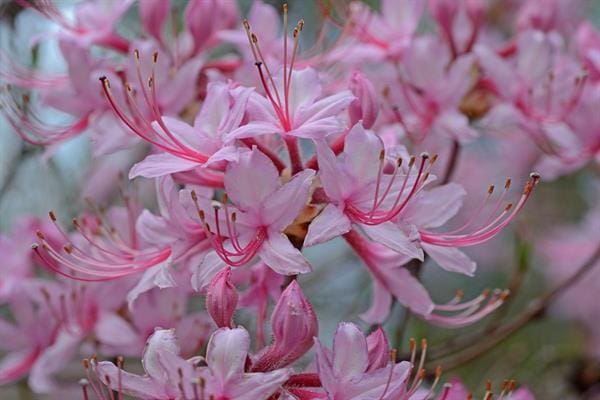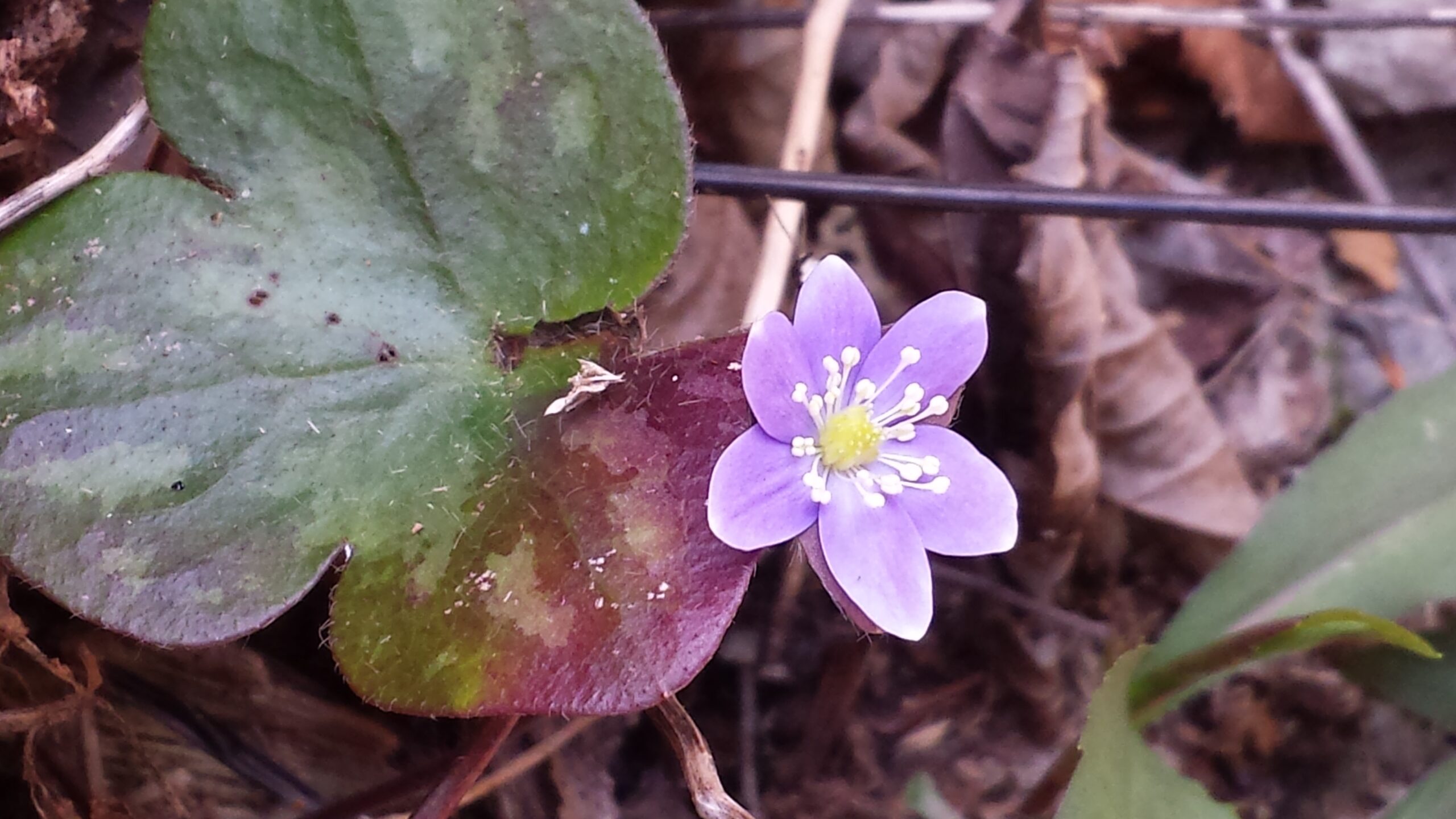It is almost impossible not to notice the flush of brilliant pinks, reds, and whites on the shrubs in our neighborhoods. It is azalea season in South Carolina, a landscaping staple in this part of the country. What you may not realize is that the vast majority of the azaleas you see are not native to our part of the world. Generally speaking, these azaleas hail from the Asian continent, but we actually have several native azalea as options for the landscape. While there are always exceptions to the rule, the easiest way to tell a native azalea from a non-native azalea is that the native azaleas are deciduous, they lose their leaves in the winter, and non-native azaleas are evergreen. If an azalea has leaves in the winter time here in the southeast, it is not native.
Azaleas were once designated by Carl Linnaeus as their own distinct genus, but they have since been moved to the genus Rhododendron. Rhododendron comes from the latin rhodon = rose and dendron = tree. One such species found fairly commonly in our area is Rhododendron periclymenoides, commonly known as pinxter flower, pinxter azalea, or wild azalea. The specific epithet periclymenoides translates to “like periclymenon,” periclymenon = honeysuckle, referring to the shape of the flowers resembling honeysuckle flowers.
Pinxter azalea can be found growing on dry to moist slopes and along streambanks from from MA, NY, west to s. OH, and south to GA and west to AL. The woody shrubs can reach 10 ft high by 4 ft wide. The large, blush pink, and fragrant flowers emerge in spring and attracts hummingbirds and swallowtail butterflies, along with other pollinators. Pinxter azaleas would be a wonderful addition to woodland garden, or anywhere they can be protected from afternoon sun, with well-drained acidic soil.



